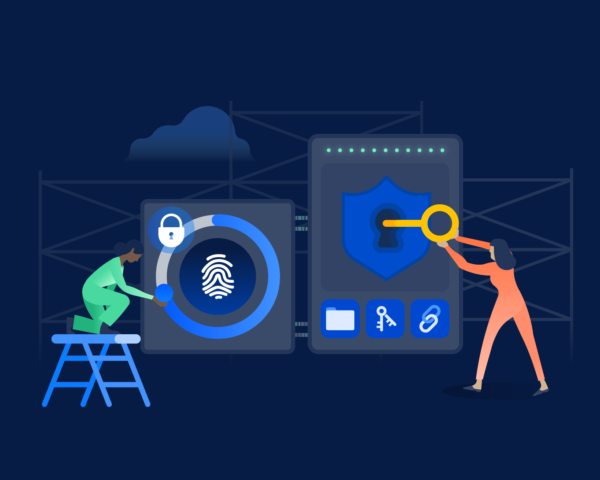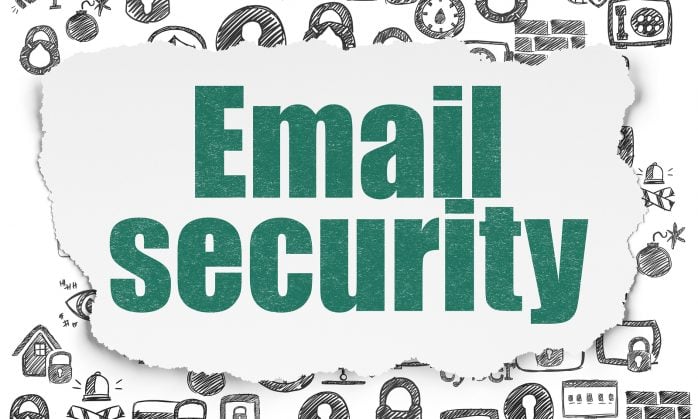Why Insurers are Requiring Multi-Factor Authentication for Cyber Coverage
As cyber liability insurance becomes a necessity for all organizations, insurers have taken proactive steps to ensure their policyholders are...
3 min read
 Mike Brattain
:
Feb 25, 2022 4:54:02 PM
Mike Brattain
:
Feb 25, 2022 4:54:02 PM

Keeping your business safe isn’t usually a single step. It’s a series of vital steps designed to build a barricade around you and your most vital information.
Authentication vs authorization are proverbial bricks in your barricade, strengthening your defenses by reducing damage to your organization. While these two words sound similar, they still represent different aspects of the security process. If you’ve been thinking of brushing up on your security know-how, keep on reading.
What is the difference between authentication vs authorization? We’ll explore the differences and similarities so you can continue to fortify your defenses.
Let’s start off this guide by defining what authentication is. Put simply, this is the process of determining the identity of someone in or around your organization.
Who are they? What is their name, title, and duties? Authentication gives you all the vital information needed to identify someone properly and move accordingly.
With the aid of digital tools, you can authenticate an individual in a matter of seconds. Since it’s easy to pretend to be other people online, this tool is a vital first step in your defense to weed out malicious third-parties.
Now for the other side of the equation. While authentication narrows down who someone is, authorization provides permission to that person.
Authorization is your permission slip, making it a lucrative tool for malicious third-parties who want to steal your information. Will this person have access to specific devices, information, or processes? What can’t the person access and why?
If you can’t authenticate someone, you absolutely cannot authorize them, either. These two terms are often confused because they always go hand-in-hand. It’s best to think of authentication and authorization as two sides of the same coin.
Now to break down the key features between authentication vs authorization. These two features work better together, since your function with business security is to protect what’s most precious.
Related: Five Ways To Improve Technology Adoption In Your Organization
Would you hand the keys to your house to a stranger? Absolutely not. The same philosophy applies to authentication.
Authentication will always take place before authorization. You need to find out who someone is – and verify they’re honest – before giving them access.
Authentication forms are all over the Internet. When you offer up your name, email, or phone number to a business, you provide evidence of who you are.
Authorization is the final permission to gain access to a certain process or tool. This aspect is not available to the casual user, as it would defeat the purpose of protecting information.
You provide authentication because you already have an incentive to share personal information. It makes sense to provide basic information to the user to help them make an informed decision.
For example, an authentication form might already offer up simple information about business features or company values. Employees can also use authentication forms to access pay information or benefits.
Authorization provides special permissions to specific users based on their title and experience. There will be limited information from person-to-person throughout the organization.
Business security is a fundamental goal of employers in 2022. We provide today’s hardworking businesses with IT solutions, cloud solutions, and business management.

Authentication is the first barrier to all of your company’s sensitive information. This step needs to be as heavily fortified as possible to make your authorization valid and secure.
There are several forms of authentication you can use, depending on your business needs, who you’re targeting, and how many steps are needed.
This authentication form is sensitive and has a few complex processes involved. It’s often used to provide several employees access to business information with time-sensitive constraints.
The average ABAC form will include details such as:
Related: What Are IT Risks (+IT Risk Management Plan Template)
This form is a much simpler form of authentication. Any employee with an RBAC form will get access based on their role inside the company.
RBAC forms are usually not able to be changed and are meant to display helpful, personalized information. It’s more common for HR managers to be provided with the means of changing employee information on a rolling basis.
These limitations ensure everyone can remain productive and attentive without compromising sensitive information.
Related: Data Breaches Are Increasing The Need For Cyber Liability Insurance
Authentication vs authorization are the flipsides to the same coin. The former is essential for confirming the identity of an individual, while authorization is assigning permission.
Attribute-based Access Control (or ABAC) is more complex and often protects information with time-sensitive protocols. Role-based access controls (or RBAC) are very popular, providing employees with personalized information while limiting the ability to change the form.
Do you need help improving your internal security protocols? Contact us today to receive personalized insight into IT communications, cloud technology, and business systems management.

As cyber liability insurance becomes a necessity for all organizations, insurers have taken proactive steps to ensure their policyholders are...

Cybercrime is having a truly major impact on the global economy, a new report has claimed. According to McAfee, in 2018, cybercrime cost the global...

Email communication is now what makes the world go ‘round. While the pandemic has exacerbated the need for online communication channels, email has...